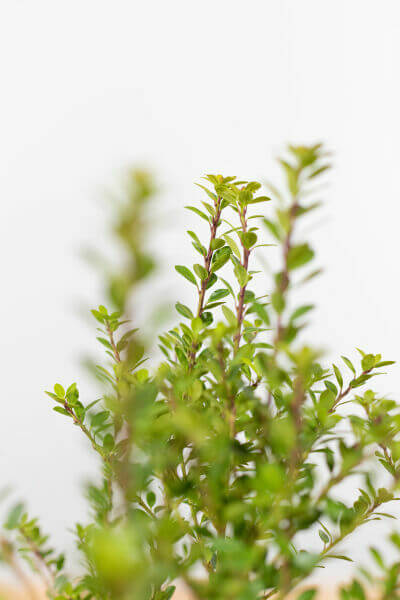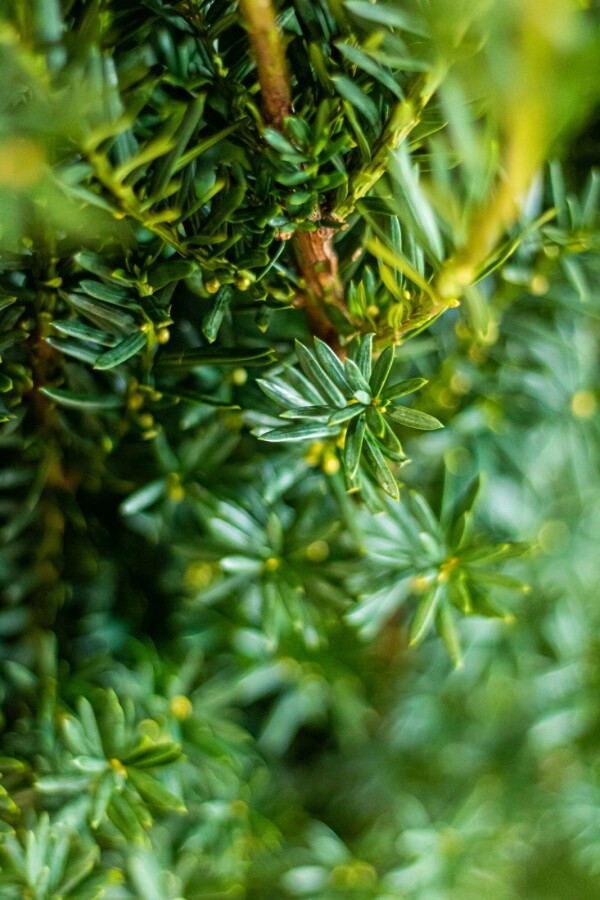Best Hedging Plants For Contemporary Borders
Boost your garden's allure with lavish hedge ranges such as Yew (Taxus), Thuja, Laurel, Photinia, and Bamboo, commemorated for their structural integrity and environmental advantages.
Yew and Thuja offer evergreen coverage and winter season resilience, while Laurel uses rapid development and broad, aromatic leaves.
Photinia adds seasonal appeal with its lively red foliage, and Bamboo lends a low-maintenance, peaceful atmosphere.
These hedges improve air quality, decrease sound, and create tranquil, personal areas.
Proper planting, spacing, and maintenance make sure energetic growth and environmental consistency.
Check out how these lavish varieties can elevate your garden's charm and wellness.
Secret Takeaways
Transform Your Garden With Lush Hedge Varieties
- Select Yew for its dense, evergreen development and exceptional durability.
- Select Laurel for its fast development and broad leaves, making sure fast personal privacy.
- Pick Photinia for its vibrant seasonal foliage, which turns a striking dark red.
- Make use of Bamboo for a low-maintenance, winter-hardy hedge with visual appeal.
- Space plants 2-3 per meter and prune routinely for optimum development and health.
Popular Hedge Plants
When transforming a garden with rich hedge ranges, it's necessary to consider popular hedge plants such as Yew, Thuja, Laurel, and Photinia due to their distinct qualities and advantages.
Yew (Taxus) is extremely respected for its durability and thick, green development, making it a prime option for withstanding landscapes.
Thuja is noted for its evergreen foliage and robust winter season strength.
Photinia includes seasonal vibrancy with red leaves that darken with time, developing vibrant visual appeal.
Laurel provides fast growth and fragrant, broad leaves, ideal for fast personal privacy.
In Addition, Bamboo is an excellent option for atmosphere, providing a low-maintenance, winter-hardy choice that enhances the garden's visual with its classy, swaying walking sticks.
These selections cater to a variety of horticultural requirements and choices.
Benefits of Garden Hedges
Garden hedges use a plethora of advantages, making them an important addition to any landscape. These natural barriers are affordable to implement and supply substantial wind security, enhancing air blood circulation and contributing to sound decrease. The dense foliage of hedges like Thuja and Beech ensures privacy by obstructing presence, creating a remote and peaceful environment.
Hedges likewise play an important role in microclimate guideline, providing a steady environment that promotes plant development and reduces temperature level fluctuations. Their complex leaf structures filter toxins, improving air quality and adding to a much healthier garden ecosystem.
Furthermore, hedges master noise decrease, soaking up and deflecting sound waves to lower ambient noise levels. This double performance of providing both acoustic and visual privacy improves the total harmony and aesthetic appeal of any garden.
Planting and Maintenance Tips
For an effective hedge, careful preparation of the planting location is crucial. Guarantee the soil has appropriate pH and drain to support strong root advancement.
Area the plants appropriately for the chosen species. Water the hedge often during its initial development stage, adjusting as required with seasonal modifications.
Implement a systematic insect control and disease prevention strategy, using chemical or organic treatments when needed. Frequently check for aphids, termites, and fungal infections.
Apply mulch to keep wetness and suppress weeds. Seasonal pruning promotes dense growth and air circulation, essential for plant health.
Following these guidelines will assist you cultivate a lively, properly maintained hedge that boosts the charm of your garden.
Spacing and Trimming Standards
Spacing and Cutting Guidelines
Proper spacing and cutting are crucial for cultivating healthy, aesthetically appealing hedges. Sufficient spacing guarantees each plant receives enough nutrients, light, and air flow.
Follow these guidelines for ideal hedge maintenance:
- Spacing: Position hedge plants 2-3 plants per meter to encourage robust development.
- Pruning Methods: Regular pruning is necessary for preserving preferred hedge height and shape. Trim brand-new growth in summer and cut down older wood during winter season.
- Seasonal Care: Adjust cutting schedules and approaches according to seasonal requirements to ensure plant health.
- Hedge Height: Frequently monitor and cut to preserve the wanted hedge height and accomplish uniform visual appeals.
Adhering to these steps will ensure your hedge thrives, enhancing both the appeal and performance of your garden.
Selecting the Right Hedge
Selecting the Right Hedge
Choosing the proper hedge involves evaluating elements such as mature height, foliage density, and environmental strength. Effective hedge plant choice requires comprehending each species' growth attributes and site-specific versatility.
For example, Yew (Taxus) uses outstanding durability and thick development, while Thuja is noteworthy for its winter season strength. Additionally, considering maintenance requirements is crucial; fast-growing species like Laurel or Privet need routine trimming, whereas low-maintenance alternatives like Bamboo or Ivy might be more suitable for those seeking minimal upkeep.
Ecological factors such as soil type, light schedule, and wetness conditions ought to likewise guide the choice process. This cautious approach guarantees the picked hedges will flourish, providing both aesthetic and practical benefits to the garden landscape.
Delivery and Planting Advice
To ensure your hedge plants grow, they should be provided by specialized carriers and planted quickly upon arrival.
Follow these vital steps for successful planting:
- Soil Preparation: Enhance the soil with raw material to improve drainage and nutrient content.
- Planting Depth: Create a trench two times the width and equivalent to the depth of the root ball.
- Watering Techniques: Water thoroughly after planting, keeping the soil regularly damp however not filled.
- Mulching: Use a layer of mulch to retain moisture and reduce weeds.
Consumer Assistance and Service
Offered the essential function of prompt help in horticultural pursuits, our customer support team is readily available 6 days a week through telephone, e-mail, and social media to offer professional suggestions and promptly address any concerns. Their devotion to fast response times ensures customer complete satisfaction by fixing inquiries connected to plant health, optimum planting approaches, and upkeep schedules.

----------------------
Within 24 hours
6 days a week
This thorough support group, strengthened by an excellent 9.3/ 10 customer score, highlights our dedication to boosting the gardening experience for every customer.
Regularly Asked Concerns
For How Long Does It Take for Hedge Plants to Establish?
Hedge plants usually require one to three years to become fully established, with the exact duration varying by species and growing conditions.
Effective care during this critical period is vital for robust development. Consistent watering, alert weed control, and proper fertilizer application are pivotal in promoting strong root advancement.
For example, fast-growing types like Laurel might develop quicker, while slower-growing varieties such as Yew may take longer. Persistent maintenance accelerates the establishment process, leading to healthy and thick hedges.
What Are the very best Hedge Plants for Privacy?
The question of the very best hedge plants for personal privacy involves assessing evergreen and deciduous options.
Evergreen hedges like Thuja, Laurel, and Cypress provide year-round protection, guaranteeing continuous privacy.
On the other hand, deciduous hedges such as Beech provide seasonal personal privacy, shedding leaves in chillier months.
Key upkeep ideas for privacy hedges consist of routine trimming, fertilizing click here in spring, and correct spacing-- generally 2 to 3 plants per meter.
Furthermore, constant watering and thorough weed elimination are vital for promoting healthy, dense growth.
Can Hedge Plants Bring In Wildlife to My Garden?
Yes, hedge plants can attract wildlife to your garden by providing important advantages like shelter, food, and nesting websites, therefore enhancing regional biodiversity. For instance, yew, holly, and laurel are outstanding for bring in birds, while ivy supports a range of pests.
However, it is essential to note that there are some drawbacks, such as increased upkeep to handle pests and regular maintenance. Carefully selecting and preserving hedge varieties can help stabilize these advantages and drawbacks, ultimately cultivating a lively and sustainable ecosystem in your garden.
Exist Any Flowering Hedge Plants Available?
Yes, there are flowering hedge plants readily available that can boost the appeal of your garden.
For instance, Elaeagnus, also understood as Olive Willow, produces aromatic white flowers in the fall, including a touch of beauty.
Photinia, another popular choice, showcases lively red leaves that develop into an abundant green, developing a dynamic visual result throughout the seasons.
To make sure these plants flourish, it's necessary to practice correct pruning techniques and seasonal upkeep, such as trimming new development in the summertime and cutting down in the winter.
These steps will assist maintain the health and aesthetic appeal of your blooming hedges.
How Do I Prevent Insects in My Hedge Plants?
To avoid pests in hedge plants, utilize natural pest control techniques and keep proper hedge care. Introduce helpful insects like ladybugs, which take advantage of damaging pests, to create a balanced ecosystem.
Routinely examine your hedges for indications of infestation and immediately get rid of any affected parts to prevent the spread. Ensure the health of your hedges by applying balanced fertilizers and offering appropriate water.
Make use of mulching to maintain soil wetness and correct spacing to reduce plant stress and promote robust growth. These practices collectively help in lessening bug concerns and keeping a healthy hedge.
Conclusion
In essence, picking the ideal hedge ranges such as Yew, Thuja, and Laurel can change any garden into a relaxing sanctuary. These plants offer year-round greenery, enhance aesthetic appeal, and offer useful advantages like sound reduction and wind security.
Proper planting techniques, precise spacing, constant watering, and seasonal trimming are important for optimal development.
Dependable delivery services and expert customer assistance guarantee a seamless experience from purchase to planting, making it simpler than ever to raise your outside space.
Garden hedges offer a multitude of advantages, making them an important addition to any landscape. These natural barriers are affordable to implement and supply considerable wind protection, boosting air flow and contributing to sound decrease. The dense foliage of hedges like Thuja and Beech guarantees privacy by blocking exposure, creating a remote and serene environment.

Pruning Techniques: Routine pruning is necessary for keeping wanted hedge height and shape. Trim new growth in summertime and cut back older wood during winter.
Comments on “Hedge Plants For Traditional Gardens”